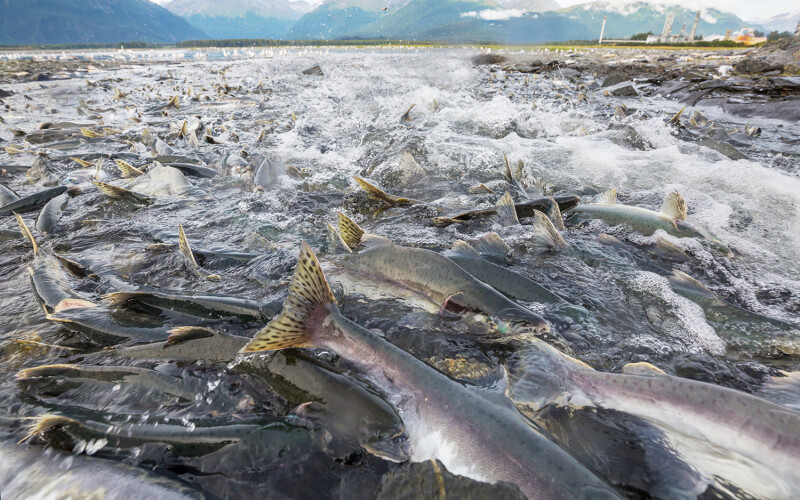The U.S. Department of Commerce has allocated USD 220 million in fishery disaster relief to the U.S. states of Washington and Alaska for a fishery disaster that took place from 2020 to 2023.
“Fishery disasters have devastating effects on local communities and our blue economy,” U.S. Secretary of Commerce Gina Raimondo said. “This disaster funding provides much-needed assistance to our fishing industry, and we will work with the affected communities to begin the difficult work of helping them recover.”
The money was appropriated by the U.S. Congress in the 2022 and 2023 omnibus appropriations legislation. The funding must be used for projects related to the fishery disasters, such as infrastructure projects, habitat restoration, or to help people find new jobs. NOAA Fisheries will cooperate with local governments to administer the money.
“We understand these fishery disasters, some of which are related to climate change, are of great concern for the fishing industry and the people and communities that depend on these fisheries to support their local economies,” U.S. Assistant Administrator for NOAA Fisheries Janet Coit said. “With this funding and NOAA’s robust science enterprise, we will continue to work together to address the challenges that climate change presents to our fishing communities and to our understanding of the nation's marine ecosystems.”
NOAA Fisheries will use commercial revenue loss data to determine how funding is distributed across the following fishery disasters:
- The Alaska Bristol Bay red ring crab and Bering Sea snow crab fisheries in the 2021-2022 and 2022-2023 seasons;
- The Alaska Kuskokwim River salmon, Norton Sound chum, and coho salmon fisheries in 2021;
- The Alaska Chignik salmon fishery in 2021;
- The Alaska Norton Sound red king crab fisheries in 2020 and 2021;
- The Non-Tribal Ocean Salmon Troll and Puget Sound salmon fisheries in 2020;
- The Alaska Copper River/Prince William Sound coho and pink salmon fisheries in 2020; and
- The Washington Columbia River, Willapa Bay and Puget Sound salmon fisheries in 2020.
NOAA Fisheries used commercial revenue loss information to allocate funding across the eligible disasters.
In September 2022, the U.S. Department of Commerce issued USD 17 million in support of West Coast tribal salmon fisheries after determining multiple disasters had occurred between 2014 and 2019, with salmon runs so low in some fisheries they were unable to be opened.
In May 2022, the federal government allocated USD 11.3 million for an Atlantic herring fishery disaster that affected fisheries in the U.S. states of Maine, Massachusetts, New Hampshire, and Rhode Island in 2019.
This story originally appeared on SeafoodSource.com and is republished here with permission.






